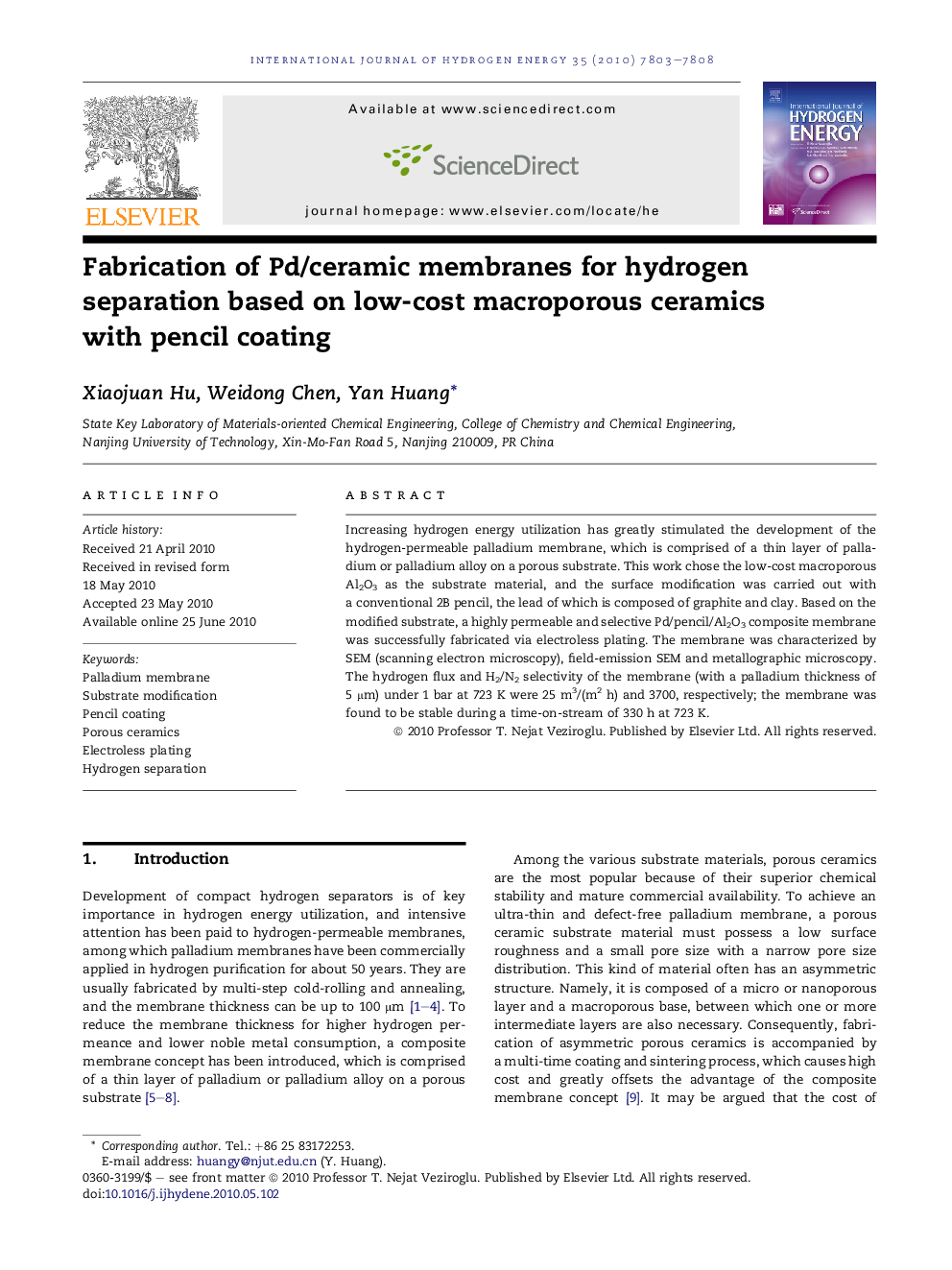| Article ID | Journal | Published Year | Pages | File Type |
|---|---|---|---|---|
| 1277956 | International Journal of Hydrogen Energy | 2010 | 6 Pages |
Increasing hydrogen energy utilization has greatly stimulated the development of the hydrogen-permeable palladium membrane, which is comprised of a thin layer of palladium or palladium alloy on a porous substrate. This work chose the low-cost macroporous Al2O3 as the substrate material, and the surface modification was carried out with a conventional 2B pencil, the lead of which is composed of graphite and clay. Based on the modified substrate, a highly permeable and selective Pd/pencil/Al2O3 composite membrane was successfully fabricated via electroless plating. The membrane was characterized by SEM (scanning electron microscopy), field-emission SEM and metallographic microscopy. The hydrogen flux and H2/N2 selectivity of the membrane (with a palladium thickness of 5 μm) under 1 bar at 723 K were 25 m3/(m2 h) and 3700, respectively; the membrane was found to be stable during a time-on-stream of 330 h at 723 K.
